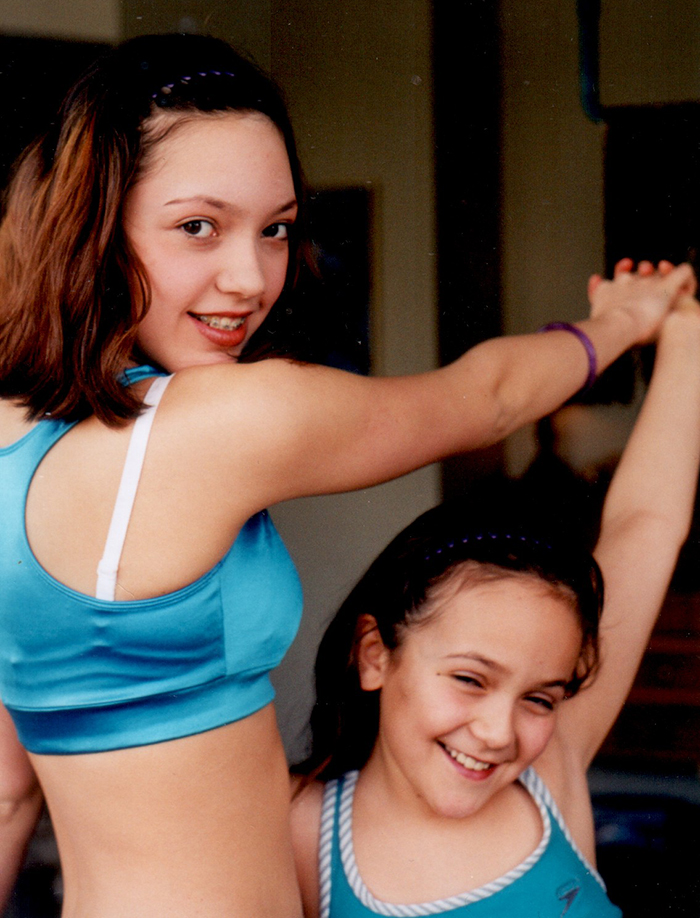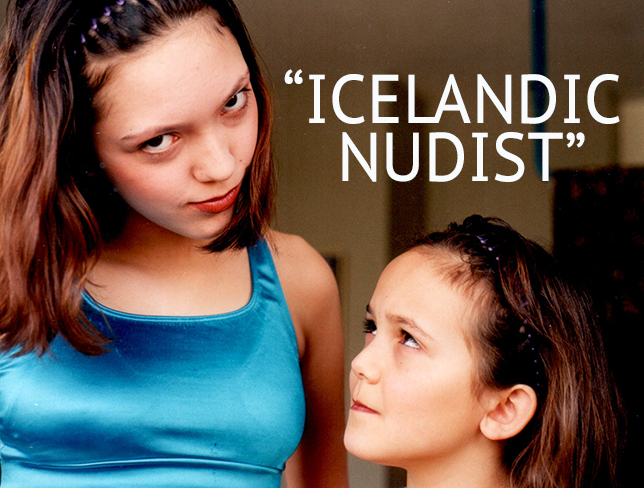Like this article? rabble is reader-supported journalism. Chip in to keep stories like these coming.
Jian Ghomeshi went to trial this month. And so, in a way, did Canadian women. The Ghomeshi trial is not only about a man who violated the four women pressing charges, but about whether we, as a society, trust women who tell.
It’s personal for me. Today and every day of February, I am sharing my own stories of sexual harassment and violence. Today is day twenty-one, in which I share my experience of entering high school and a particularly prescriptive bra culture. If you’re joining us now, may I suggest that you start at the beginning, by reading my introduction here. You can also read an excellent guest post about post-abuse behavior and recovery here. And remember, practice self-care. The Ghomeshi scandal has one hell of an undertow.
***
This is incident number 11.

The school was an externally beautiful and internally yellow old building in Kitsilano, Vancouver. It smelled, not entirely unpleasantly, like fruit roll-up made of floor wax and sweat. Its walls were yellow; in the rain of winter the fluorescent lights shone lime. Most desks had something disgusting in them. A triptych of Jack Shadbolt’s butterflies hung in the library and they were yellow, too.
Like all secondary schools, it had an intricate unofficial geography. East door: where the skids hung out, with their purple hair, acid trips, and foster homes. Third floor: where the first-generation Asian-Canadian immigrant kids sat on the floor and ate their unfamiliar food. First floor southeast hallway: all the Grade 12 students, dimly lit. Second floor: the rich jock popular hall, in which everything (the perfume and cologne of which it reeked; the boys) was named Tommy.
Me? I was in no-man’s land. I was the new girl and got my locker after everyone else. It was beside a quiet boy who smelled of cats and directly outside the guidance counselor’s office.
The counselor was a straight-talking middle-aged woman from French Canada who smelled of cigarettes and (plot twist!) cats. She was in charge of the academic and psychological health of hundreds of children. She didn’t particularly appreciate my situation — coming from an alternative school, having an alternative name, brandishing a certificate of completion of Grade 12 English but hardly having started Science or Math — and was not afraid to let me know how much I inconvenienced her. I cried after our first meetings. She was so tough. So uncompromising. She made me take Grade 10 English.*

(This was a great idea. I loved that class and learned a lot.)
I had never really played sports and ran with the coordination and athleticism of an under-watered herb garden. I knew none of the rules to the games we played (tennis, volleyball, basketball) but fortunately, girls aren’t taught how to play sports. I wasn’t alone in being the worst in the class.
There was one girl in particular who was much better at sporting than I was. She was tall, extremely thin, and had dullish brown hair. She talked about food a lot. She was an unhappy person, and mean, and from a good family, and that made her mid-level popular. She wasn’t like me, entering this whole game 10 years late with stupefying arrogance, mended tank tops, nothing with the name “Hilfiger” on it.
I couldn’t play the sports games but I wasn’t about to lose participation marks, especially since I skipped class so often. When I was there, I figured I should run when the teacher told us to. I’m a truant, not a slacker. (Just a note: These were the days before everyone had water bottles with them all the time as a signifier of purity and health. To us, they were something for marathon runners or pregnant women. Take heed, young women: our pee may have been a darker shade of yellow but we did not die from toxification.)
I learned about the kinds of clothes one must have for the playing of sports. Having none of my own, I purchased a pair of athletic shorts from the school store. I found that regular bras did not give enough support to my breasts during PE, and they hurt. I didn’t like feeling smelly afterward, either. So one day I wore a sports bra under my tanktop for fumbling balls and sweating in.
I changed out of it and into my regular bra and clothes afterward. I wasn’t aware of any unusual social codes in the changing rooms. From what I could tell, girls quickly changed their clothes in the way women often do: chatting loudly, huddled over as if the top row of lockers contained windows or a one-way mirror.
It wasn’t until the next day that I heard about it. Rob, a boy in my science class, told my lab partner that there was a rumor going around about me. That not only did I have braces and breasts, I was probably, no, definitely was, what else, but an “Icelandic nudist”.

I felt my heart begin to pound. I didn’t know it was wrong to change my bra in the changing room. The last thing I wanted was for the popular girls to hate me. I knew we would never be friends but I had hoped we could coexist. Rob was unsurprisingly excited to talk to me about my breasts. How I was an exhibitionist, and it’s like, really disgusting. He said that the girls had asked him to ask me not to. I acted like I didn’t care.
I seethed.
The next week I went to the changing room after gym. I had some friends and though they didn’t know my situation, I felt they were supportive of me as we chatted at the bench. I took off my shoes, changed my shorts. I took off my tank-top. And then I took off my bra. I didn’t stand with my hands on my hips but I may as well have. The mean girl was nearby. She said, “Ugh, can you not DO THAT?” but there was lots of chatter going on in the changing room. I looked at her and pretended I didn’t hear.
Victory.
Rob wouldn’t let it go. My gross, disgusting breasts were something he really wanted to talk about. He sat behind me in science class. I stopped going to science class.
Failure.
But I’m no slacker, right? Science was new to me and I needed to attend it in order to pass. I slipped into the guidance counselor’s office. I said that I didn’t want to get him in trouble, but that I was having a tough time. I cried. She softened like a ball of grass-fed butter. She asked if I would talk to him with her there. I must have declined because our final agreement was that she would call him in. She promised me that everything would be OK and that I could go back to class without being called “Svea Skinflicksdottir” (which would have been a good name to call me, but Rob was no Grade 12 English graduate).
I didn’t take her reassurances with a grain of salt. I let them settle in the glow of a Himalayan salt lamp. I was scared. This month-long Ghomeshi Memories project is an exploration of how we treat women who tell. But we all know what happens to kids who tell.

…Nothing.
In this case, it was fine. I didn’t talk to Rob in Science class and he didn’t talk to me, either. A few weeks later a kid I didn’t know asked if Rob had apologized to me yet. I said I didn’t know what he was talking about.
And I began to change in one of the unused shower stalls.
***
I wasn’t going to include this story in the project because nothing physical happens in it. A boy at my next high school told me he could make any girl cum in 90 seconds and grabbed my neck (like the story I shared on Day 19, probably in an attempt to start some beef with my boyfriend) and I thought I would write about that. But this event affected me more. And it encapsulates so much of what was terrible about being a teenager.
At 14, I wasn’t a normal kid. I had been treated as an equal by my mother and my teachers (sorry, “Learning Consultants”) at my previous alternative school. I wasn’t an adult but I was more comfortable pretending to be one. I was horrified to discover what high school really was.
It was a place where a girl cut her wrists and was told (by her friends) that she was “only trying to get attention.”
Where a 13 year-old at a party was grabbed by three older boys who “tagged” her breasts with a sharpie and no one said a thing even though she sat with her arms crossed in front of her on the couch afterward and her face looked very small.
(Especially not the girl wearing a too-tight skirt and flirting with one of those boys, who was me. I’m sorry, C.)
Where hundreds of photocopies of a drawing depicting a woman being raped by two school mascots were surreptitiously distributed throughout the first-floor lockers and lay discarded on the floor for the rest of the day.
Where a girl who had moved to Vancouver to escape her rapist was called a skank because she wore platform shoes and heavy makeup.
Where two boys presented soft core pornography in an assignment to their (mostly male) computer class and the (male) teacher just chuckled.
Where it was common practice to have sex at 13 and not know why you were crying afterward.
I pretended I was an anthropologist sent to study a strange colony. I’m sure I was annoying and self-serious and I know I was a participant in this violence, too.
The disgust at my pragmatic approach to my body was part and parcel of the misogyny that ran rampant through the school’s halls. The discomfort with my breasts was part of a larger rejection of female bodies, a culture of anorexia rephrased in front of every mirror in every washroom. Even the joke about me being an “Icelandic nudist” hints at the xenophobia and racism that undergirded so many interactions (I know it was a joke because although my family “doesn’t look Swedish,” we, generally, wear clothes). I don’t know to what I can attribute the guidance counselor’s effectiveness at stopping this one manifestation of those hatreds, except that she was hard as nails.
Of course, there were good people there. A tight-knit group of my closest friends came from that school. I remember laughing so hard I couldn’t breathe. And there were adults who wanted to help. The guidance counselor, my English teacher, the gym teacher.
Ms. K, the gym teacher, spent a class talking to us about reproductive health and safety. She related a story about being assaulted by a friend at a wedding and telling no one. Always on-brand, I told her I thought she should. She held an essay contest to win a copy of Christine Northrup’s Women’s Bodies, Women’s Wisdom (only one other person entered; I won!). She talked to us about periods and sex and pregnancy and apologized in our next class, saying that it hadn’t worked out the way she wanted — that she felt that we had left the conversation feeling that our bodies were gross.
But because it was us having that conversation, and in that place and that time, it couldn’t happen any other way. Out of the group of six women I remain close with from that school, four of us left it. I transferred after just one year.
My husband and I took our kids back to Vancouver over the holidays. My mom and stepdad live near the high school and I took my son to the playground bordering it almost every day. The school is empty now. Like the hull of a ship, the front facade remains (Vancouver heritage laws in effect, no doubt) as its guts are demolished. My 5 year-old and I gazed in amazement, watching giant machines tear up its concrete and rebar, carry out shards of glass.
I took a picture and put it on Instagram. Captioned, “It couldn’t be happening to a better building, tbh.”

I don’t mean more deserving. The $50 million reconstruction project (!) should rightfully be happening at a school with lower test scores. But the place was not a happy one. It could use a fresh start, a new coat of yellow paint.
—
Svea Vikander is a Swedish-Canadian radio host and therapist currently residing in Berkeley, California. Find her on twitter (@SveaVikander) and Instagram (@SveaVikander).
Like this article? rabble is reader-supported journalism. Chip in to keep stories like these coming.


